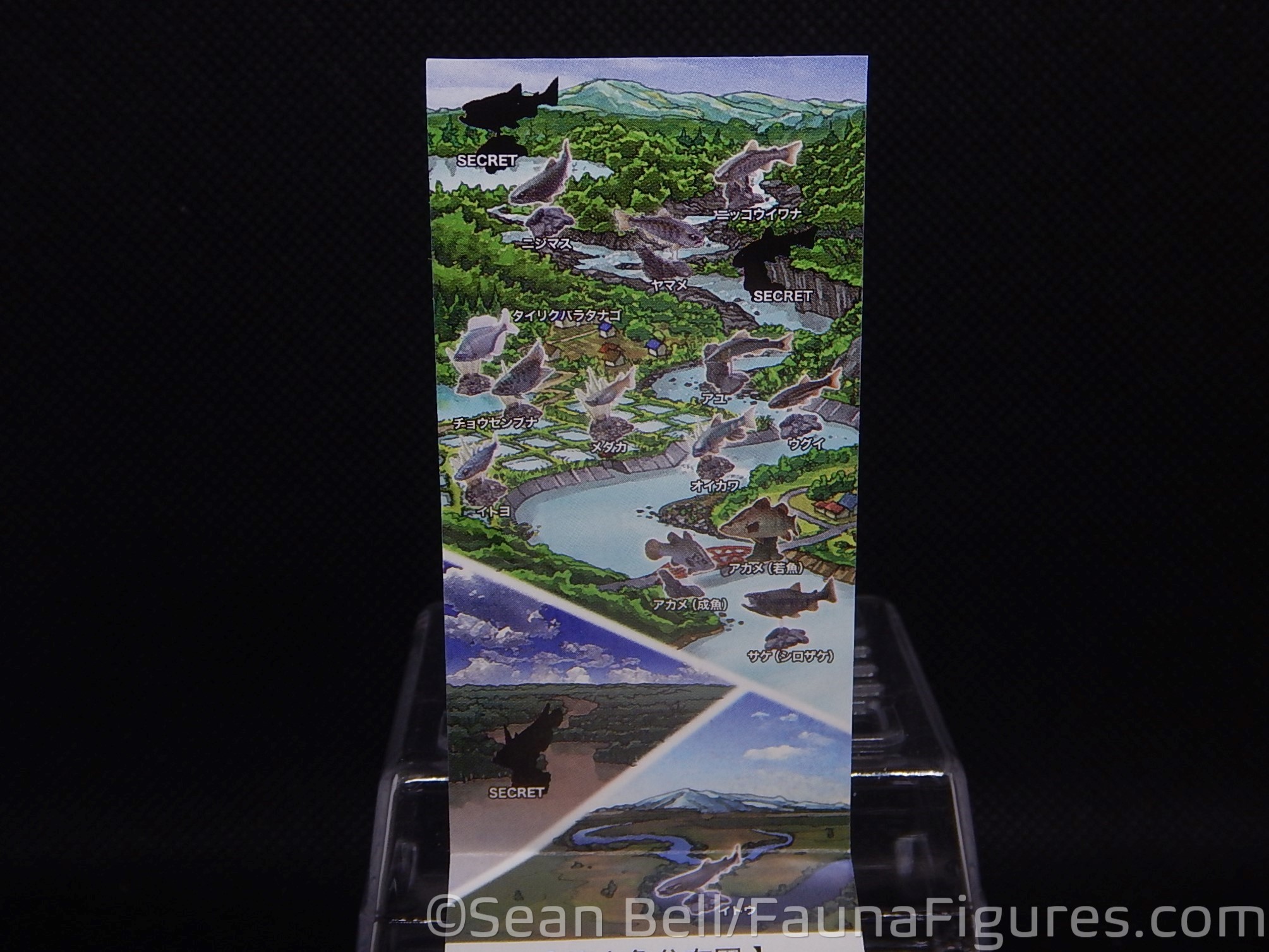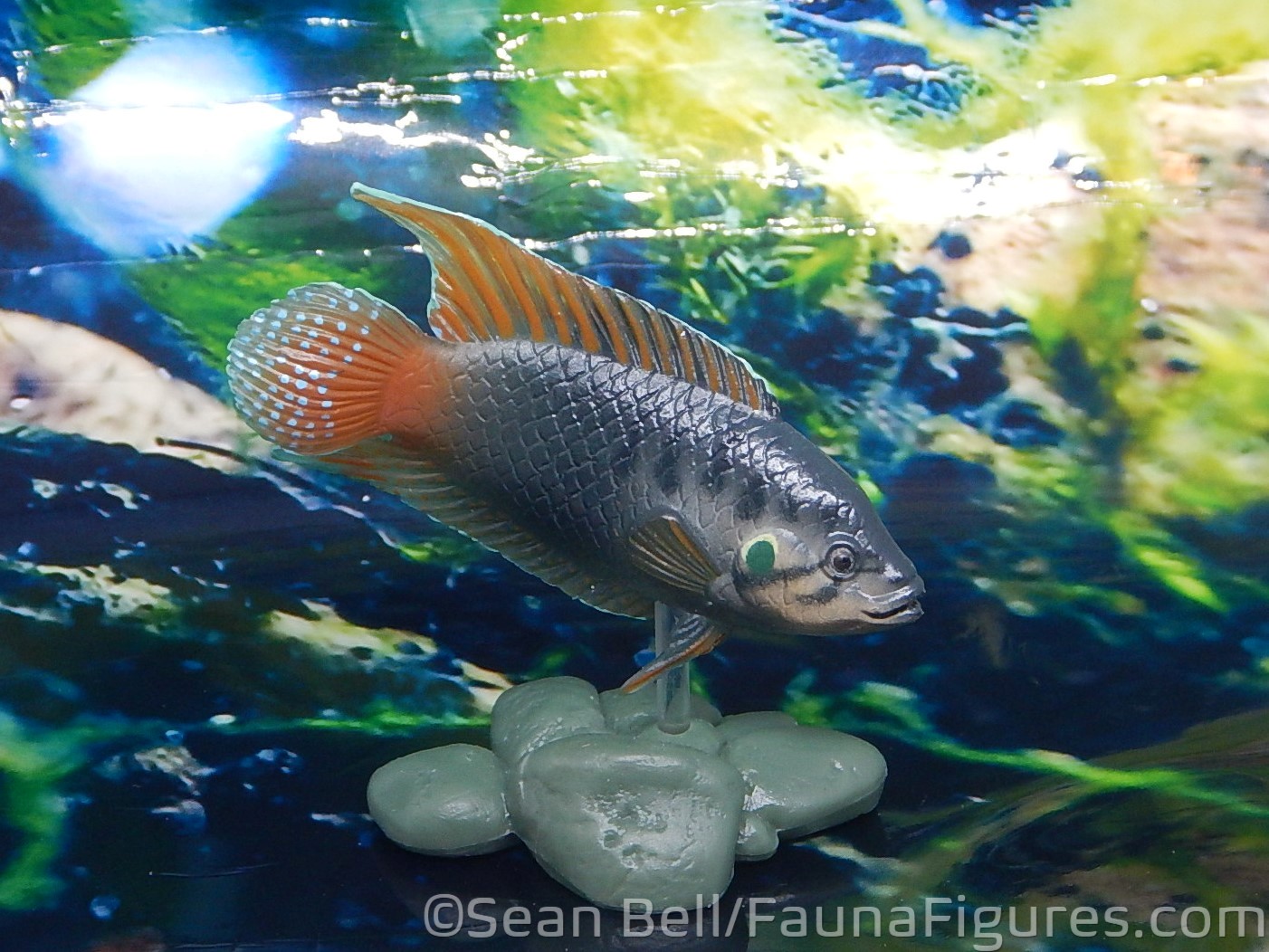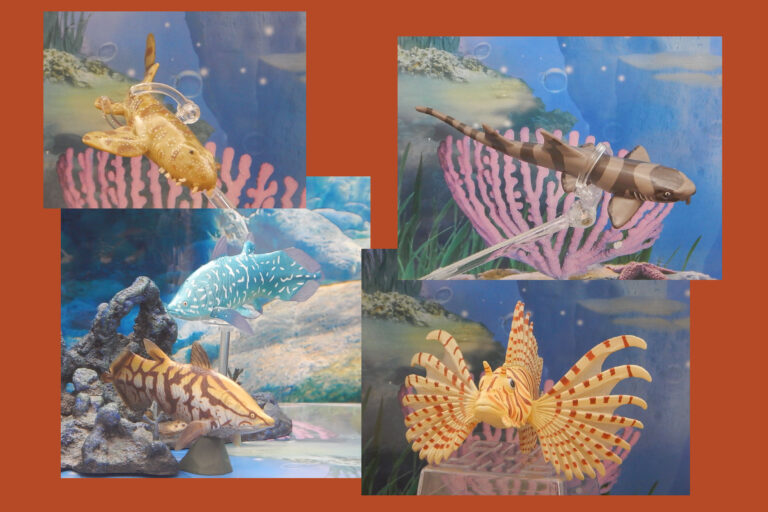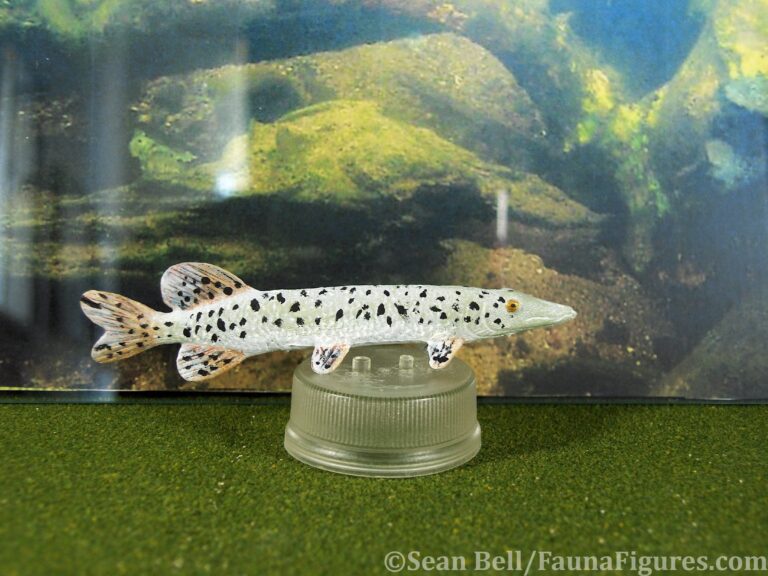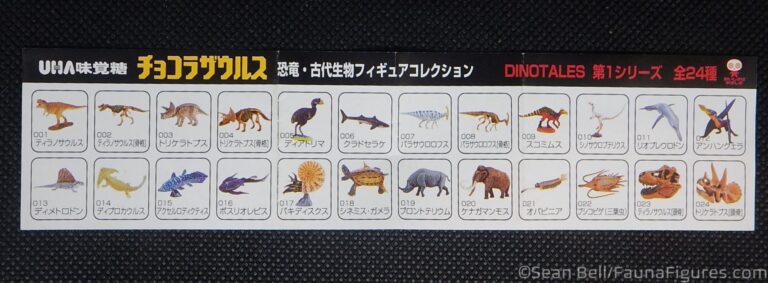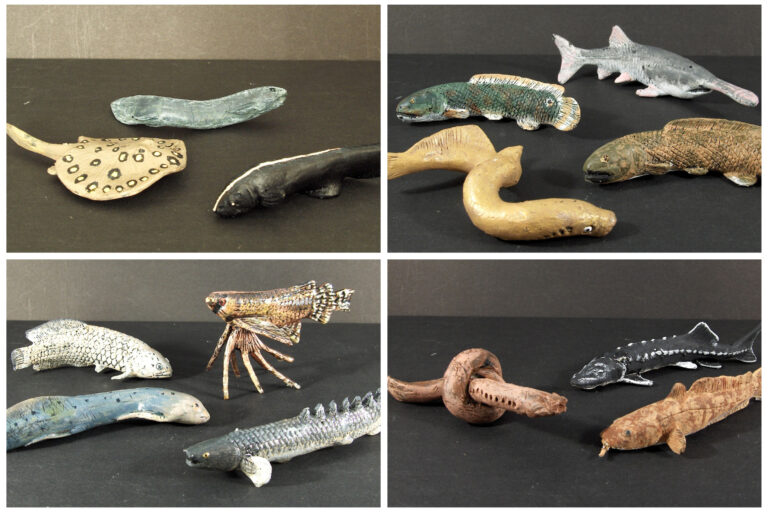Still on a roll with the Japanese set! And again, it’s the figures that I have from larger sets. They’ll be fairly short this week, as I don’t have many of either one…and it’s been a busy week too! For this post we’ll look at the figures from one of the Yujin Freshwater Series, a range of figures I’ve explored a few times before. In this instance, it is the original of the originals. These are the figures that I have from Book one, release one–I think from the late 90s. Note that Yujin referred to their series as ‘Books’, and still often do (even though there are no particular books, just capsule figures with papers!
The papers are useful as they give the species indicated, and in this case, even give ‘silhouettes’ of the secret figures! I think I might even have them…it can honestly be maddening trying to work out which figure is in which release. Sometimes the paint is obvious, sometimes it’s only clear because that paper was included (Book 1 revised and Book 1 2nd release have different papers). In the case of the two figures that I can definitely be sure of, that information was useful–for the Roundtail Paradisefish (number 10 in the line), there’s even some history; the species are listed, but the figure was labelled as clearly the wrong species–it’s listed as Macropodus opercularis but that is clearly not possible (the tail is wrong). Later ones were listed as M. ocellatus–but even then, the papers were listed as M. chinensis (later synonymized with M. ocellatus). The history on these can be fun.
The other figure that I have is the adult Barramundi (number 13 in the line), which is very well made. The Yujin lines also include a juvenile one; they are simply painted differently–identifiable by their red eyes. It’s kind of weird that they don’t just have the Japanese barramundi instead, but they must have used older information. This also carries a tradition of the Yujin figures–the same sculpt painted differently for different species (or ages?). Two of the the secret figures indicated are examples of this as well (the third is the Asian arowana, which of course I have, although there are different ones).
I probably got these figures in a random assorted lot from Japan; I was frequently able to get big lots of them, even in sealed packages–which means that I was able to associate them with their papers and their included stands. Note that there are only a few different stands, cast in a few different colours. Hardcore collectors actually try to get the figures with all 4 different colours (one of which is fully painted, usually with secret/special figures). Other versions are here and here and the fifth type, in painted form, is here. Anyway, these figures are of course no longer available–in any release. It’s too bad, as they are excellent figures that hold up very well. They also aren’t breakable, so it isn’t too hard to find them in good condition. And of course, if you aren’t particularly worried about the release version, it can be a little easier. It’s a great set, I highly recommend tracking down the whole set (if you want to see them all, years ago I did a review of every figure on the Animal Toy Forum, you could see them all here too!)

